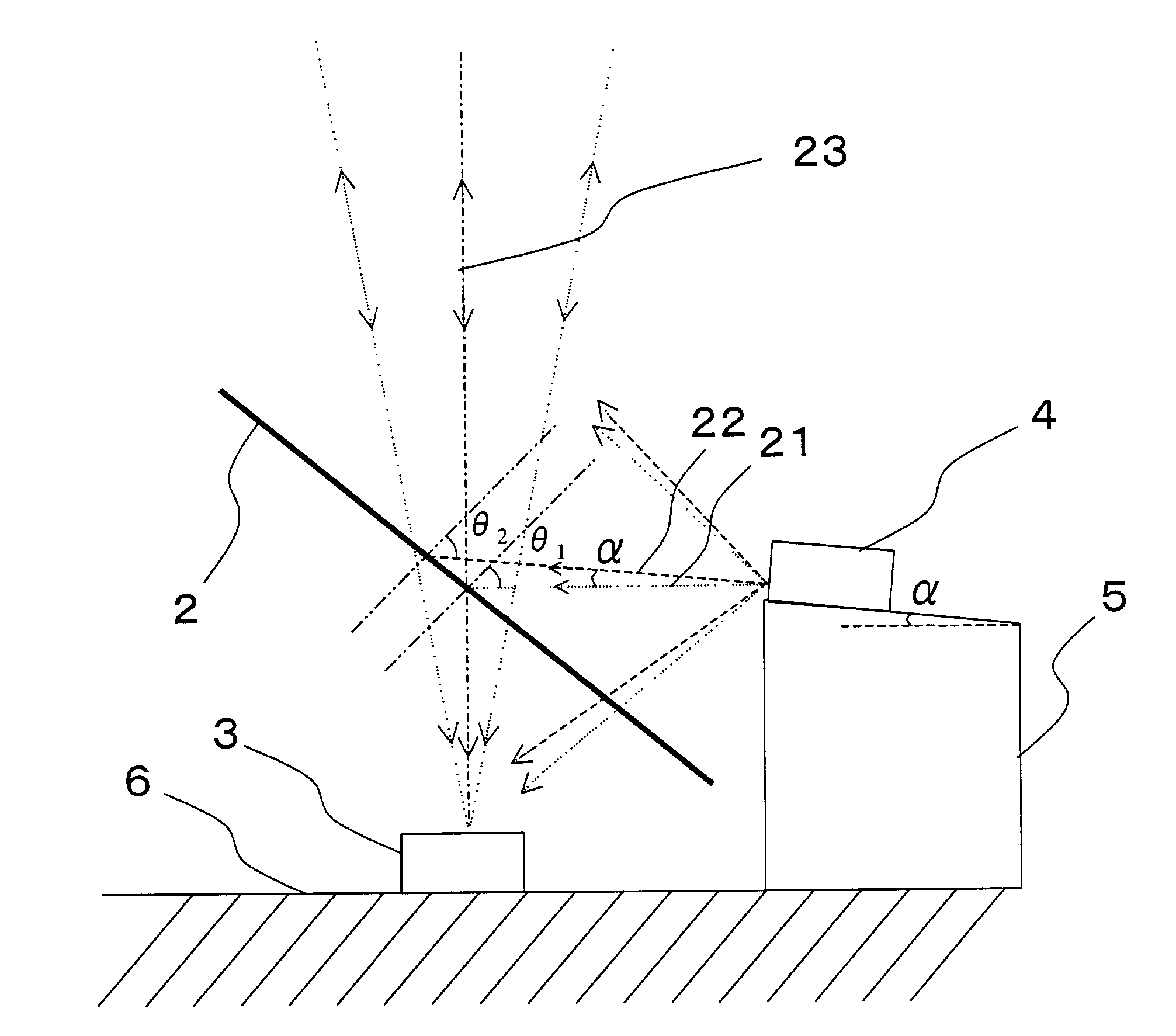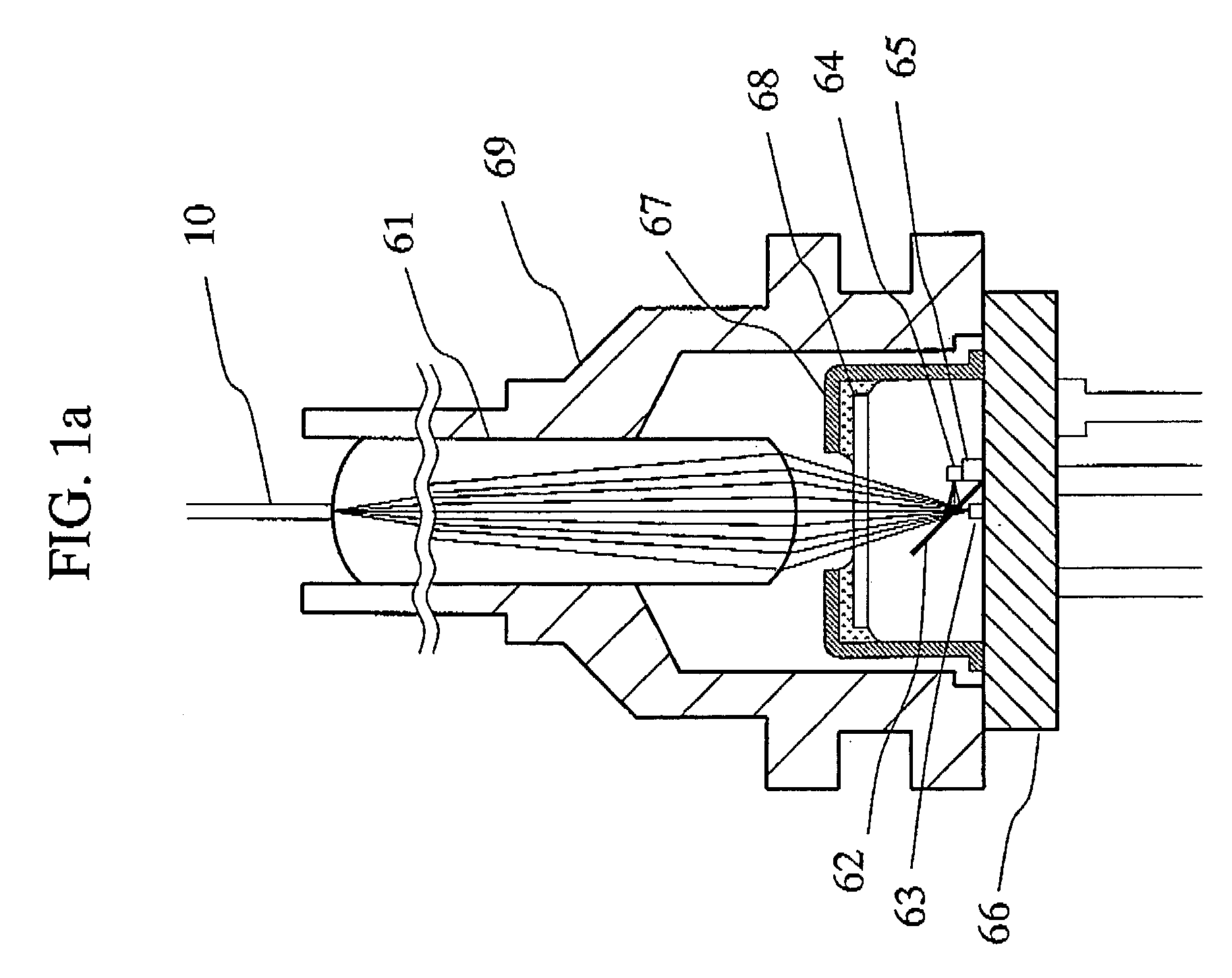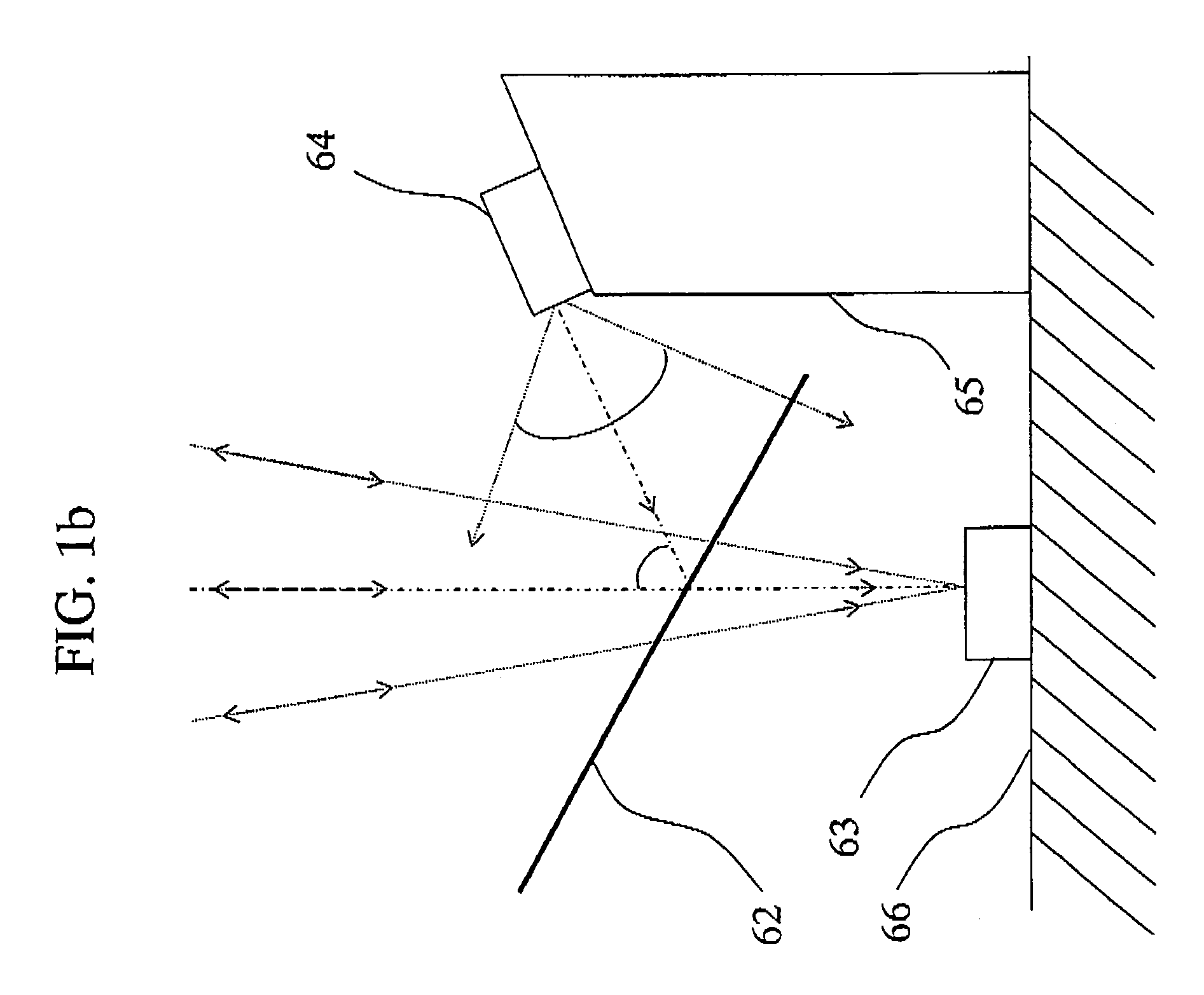Optical transceiver
a transceiver and optical technology, applied in the field of optical transceivers, can solve the problems of not being able to apply the optical transceiver having the prior, and the reception cannot be carried out normally, and achieve the effect of reducing near-end crosstalk
- Summary
- Abstract
- Description
- Claims
- Application Information
AI Technical Summary
Benefits of technology
Problems solved by technology
Method used
Image
Examples
first embodiment
of the Invention
[0058]FIG. 2a and FIG. 2b show an embodiment of the present invention applied to a same wavelength, direction division multiplexing, single-fiber, bi-directional transmission system in which the optical plate is limited to a half mirror.
[0059]FIG. 2a is a rough explanatory drawing of an optical transceiver according to the present embodiment, and FIG. 2b is a rough explanatory drawing showing an enlarged view of a main portion thereof. In order to apply the optical transceiver to a same wavelength, direction division multiplexing, single-fiber, bi-directional transmission system, the present embodiment has the distinctive feature of being constructed so as to prevent near-end crosstalk caused by the transmission signal light from the light emitting element being incident on the light receiving element inside the optical transceiver. A detailed description is given below with reference to the drawings.
[0060]As shown in FIG. 2a, reception signal light from an optical t...
second embodiment
of the Invention
[0069]FIG. 4 shows an embodiment of the present invention applied to a same wavelength, direction division multiplexing, single-fiber, bi-directional transmission system in which the optical plate is formed by a half mirror.
[0070]FIG. 4 is a rough explanatory drawing showing an enlarged view of a main portion of the optical transceiver. In order to apply the optical transceiver to a same wavelength, direction division multiplexing, single-fiber, bi-directional transmission system, the present embodiment has the distinctive feature of being constructed so as to reduce near-end crosstalk caused by the transmission signal light from the light emitting element being incident on the light receiving element inside the optical transceiver.
[0071]A detailed description is given below with reference to the drawings. Namely, in order to make manufacturing easy, normally the laser diode is mounted to the top surface of the submount which is parallel to the top surface of the sys...
third embodiment
of the Invention
[0076]FIG. 5 shows an embodiment of the present invention applied to a same wavelength, direction division multiplexing, single-fiber, bi-directional transmission system in which the optical plate is formed by a half mirror. FIG. 5 is an enlarged view of a main portion of the optical transceiver. In this embodiment, when the beam expansion of the transmission signal light of a laser diode 14 is smaller than or equal to the original maximum beam expansion angle of the transmission signal light from the laser diode 14 condensed to the optical transmission path by the half mirror and the coupling lens, there is little degradation of the amount of the transmission signal light from the laser diode 14 condensed in the optical transmission path even when the emission direction of the transmission signal light from the laser diode 14 is moved slightly.
[0077]Namely, with the laser diode 14 mounted to a submount 15 so that the substrate plane of the laser diode 14 is perpendi...
PUM
 Login to View More
Login to View More Abstract
Description
Claims
Application Information
 Login to View More
Login to View More - R&D
- Intellectual Property
- Life Sciences
- Materials
- Tech Scout
- Unparalleled Data Quality
- Higher Quality Content
- 60% Fewer Hallucinations
Browse by: Latest US Patents, China's latest patents, Technical Efficacy Thesaurus, Application Domain, Technology Topic, Popular Technical Reports.
© 2025 PatSnap. All rights reserved.Legal|Privacy policy|Modern Slavery Act Transparency Statement|Sitemap|About US| Contact US: help@patsnap.com



